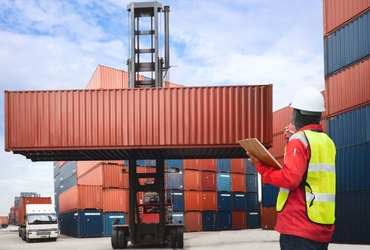
South Korean shipping lines join forces



South Korean shipping lines join forces
It’s been one year since the collapse of South Korea’s then-largest shipping liner, Hanjin Shipping. The country’s shipping industry is now taking a step forward and getting serious with reestablishing itself as a key player in the global container shipping industry. The remaining South Korean shipping lines, including current leaders HMM and newcomer SM Line, have come together to sign a memorandum of understanding to form the Korea Shipping Partnership.
This is the first time the nation’s shipping lines are uniting under a single name. The 14 liners will work together to improve services on the intra-Asia trade lanes by sharing cargo, shipping routes, and co-managing terminals.
“This is an interesting move. HMM was sort of left out with the new partnerships last year. They made an agreement with 2M but it’s not quite the same. Perhaps partnering to strengthen their intra Asia coverage is a smart moves that gives them a little something different compared to the other global carriers.” – Klaus Lysdal, VP Sales & Operations of iContainers
The consortium plans to form operational guidelines by year end and hopefully launch operations by the start of next year.
“Under the terms of the agreement, they will cooperate to improve their collective strength through various measures including increasing shared cargo capacity, adding new shipping routes and co-managing overseas terminals.” – KSP report
Intra-Asia potential
It’s unclear just how profitable the intra-Asia focus. Reports say the intra-Asia market appears to be weakening, and the fierce rivalry among the Korean carriers does not seem to help their case.
According to Drewry, the intra-Asia throughput registered a 4% year-over-year growth in 2016 to 30 million TEUs. The combined intra-Asia capacity of all 14 liners is 308,000 TEUs. This, according to Alphaliner, represents quite a large distance from the 1.28 million TEUs handled by the non-Korean carriers on the trade. It has since advised the Koreans to push ahead with a full consolidation should they want an opportunity at being competitive.
“The Korean carriers’ disadvantages from lack of scale and from excessive competition in their common markets can only be overcome by full fledged consolidation.” – Alphaliner
Possible pivot to Asia-US trade lanes
The group aims to increase South Korea’s shipping competitiveness by having a stronger hold on offerings. According to local reports, HMM is expecting a shortage of container carriers on high-traffic US routes from August to October. As such, it wants to assign more vessels in order to meet the rising demands. It is also reportedly in talks with its 2M partners on whether it should focus on US routes.
Just recently, HMM posted a 77% increase in its Asia-US West Coast volume. And according to American Shipper, US West Coast ports such as Oakland, Long Beach, and Los Angeles have boomed this year. All three ports have recorded year-on-year increases in overall container volumes and container imports for the month of June.
“This could also possibly strengthen HMM’s US trade if they can find a way to provide broader service from all over Asia to/from the US at competitive rates. If they can offer something to the smaller ports, that may add a little bit of niche business to the global set up.”
– Klaus Lysdal, VP Sales & Operations of iContainers
Crawling back to normalcy
The announcement comes one year after Hanjin Shipping’s collapse sent shock waves across the industry. Their aim? Undoubtedly to strengthen South Korea’s dwindling competitiveness in the industry. The sector has been struggling to pose any sort of challenge against other nations since Hanjin Shipping, then 7th-largest liner in the world, filed for bankruptcy.
Luckily for HMM, it met with a better fate after receiving rescue funds from the Korea Development Bank. But that also meant having to fill the shoes of Hanjin and lead the country’s shipping industry out of its stagnancy. The South Korean government has been preparing it to take over as the country’s main sea flag carrier.
Since then, it has entered into a partnership with shipping giants Maersk and MSC. But not all’s fine and dandy. The company’s net losses has more than doubled. For the first quarter this year, it registered a net loss of $652 million from $245 million a year ago.
Sign of need for cooperation
This move by the South Korean shipping lines is similar to that of their Japanese counterparts last year, with the announcement of the Ocean Network Express. 2016 not only saw the downfall of Hanjin, but also an unprecedented wave of shipping mergers and acquisitions.
In one calendar year alone, we witnessed Hapag-Lloyd’s merger with UASC, CMA CGM’s acquisition of APL, and Maersk’s acquisition of Hamburg Süd. Let’s also not forget the merger of COSCO and China Shipping to form COSCO Shipping, which itself recently announced its acquisition of OOCL.
Related Articles


